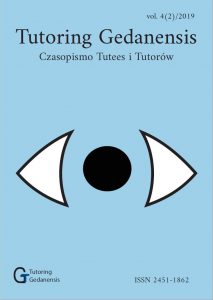Jak ryby zdobywają pokarm i uważają, aby samemu nie stać się pokarmem
Słowa kluczowe:
ryby, ewolucja, strategie, pokarm, drapieżnictwo, obronaDownloads
Bibliografia
Anderson, P. S. L., Westneat M. W., 2007. Feeding mechanics and bite force modelling of Dunkleosteus terelli, an ancient apex predator, Biology Letters, 76–79.
Carnevale, G., Pietsch, T. W., 2006. Filling the gap: a fossil frogfish, genus Antennarius (Teleostei, Lophiiformes, Antennariidae), from the Miocene of Algeria, Journal of Zoolog y, vol. 270, 448– 457.
Ginter, M. [red.] 2012. Ryby kopalne, Wydawnictwo Uniwersytetu Warszawskiego, Warszawa.
Gould, S., J., (red.), 1993. The Book of Life, Ebury Hutchinson, Londyn. Miya, M. i in., 2010. Evolutionary history of anglerfishes (Teleostei: Lophiiformes): a mitogenomic perspective, BMC Evolutionary Biology, 10–58.
Nielsen, G. J., Bertelsen, E. Jespersen, A., 1989. The Biology of Eyrpharynx pelecanoides (Pisces, Eurypharyngidae), Acta Zoologica, 187–197.
Saenz, A., Ortiz, N., Lomonte, B., Rucavado, A., Diaz, C., 2017. Comparison of biochemical and cytotoxic activities of extracts obtained from dorsal spines and caudal fin of adult and juvenile non- -native Caribbean lionfish (Pterois volitans/miles), Toxicon, vol. 137, 158–167.
Santini, F., Sorenson, L., 2013. First molecular timetree o f billfishes (Istiophoriformes: Acanthomorpha) shows a Late Miocene radiation of marlins and allies, Italian Journal of Zoology, 481–489.
Szaniawski, H., 2009. The earliest known venomous animals recognized among conodonts, Acta Paleontologica Polonica 54 (4), 669–676.
Xu, G. H., Zhao, L. J., Gao, K. Q., Wu., F. X., 2012. A new stem-neopterygian fish from the Middle Triassic of China shows the earliest over-water gliding strategy of vertebrates, Proceedings of the Royal Society B: Biological Sciences, 2012–2261.
Źródła internetowe
https://en.wikipedia.org/wiki/Dunkleosteus [Dostęp 24.01.2019]
http://phenomena.nationalgeographic.com/2011/03/09/unraveling- -the-nature-of-the-whorl-toothed-shark/ [Dostęp 24.01.2019]
https://www.fishbase.org/summary/FamilySummary.php?ID=419 [Dostęp 24.01.2019]
https://www.mexican-fish.com/sailfish/ [Dostęp 24.01.2019]
https://pl.wikipedia.org/wiki/Po%C5%82ykacz [Dostęp 24.01.2019]
https://www.floridamuseum.ufl.edu/fish/discover/species-profiles/ antennarius-striatus [Dostęp 24.01.2019]
https://www.fishbase.org/summary/OrdersSummary.php?order=Lophiiformes [Dostęp 24.01.2019]
http://ocean.si.edu/ocean-news/meet-tiny-bacteria-give-anglerfishes-their-spooky-glow [Dostęp 25.01.2019]
https://video.nationalgeographic.com/video/weirdest-angler-fish [Dostęp 25.01.2019]
https://pl.wikipedia.org/wiki/Meiacanthus [Dostęp 25.01.2019]
https://pl.wikipedia.org/wiki/Ptaszor_jask%C3%B3%C5%82czy [Dostęp 25.01.2019]

 Uniwersyteckie Czasopisma Naukowe
Uniwersyteckie Czasopisma Naukowe



